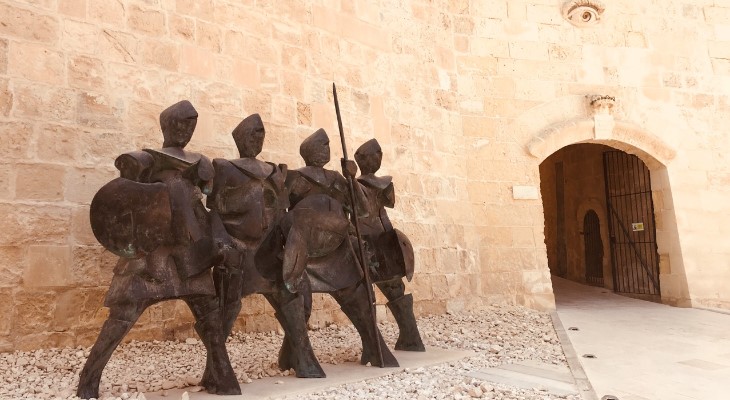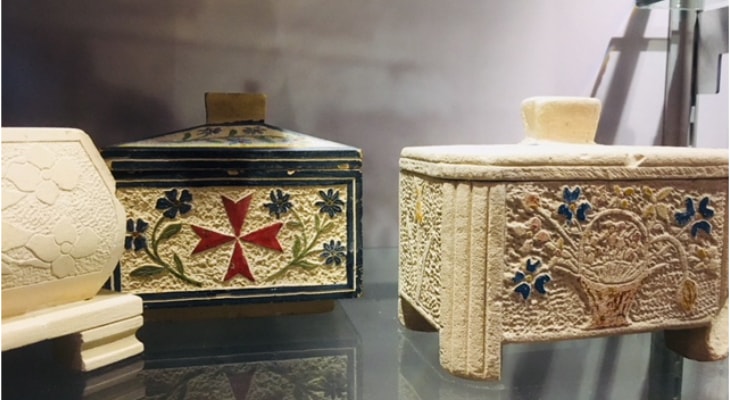Take a fascinating walk through Malta’s military history from 5000 BC to modern times in Malta’s most strategically located 16th century fort.
The tip of the Sceberras Peninsula on which the capital city of Valletta was constructed was always a most strategic location, so much so that even back in 1417, a reference to a permanent military watch-post at what was known as Santo Eramo was already recorded in the militia roster.
When the Knights of St John arrived in Malta in 1530, they quickly secured the site and commissioned their military engineer Pietro Pardo to build a star-shaped fort in just six months, in time for it to be tested to the limits by the mighty Ottoman force in the Great Siege of 1565.

Adriana Bishop
Fort St Elmo withstood a relentless onslaught and after the Ottomans were defeated, it was enlarged by another military engineer, Francesco Laparalli, who designed Valletta’s grid-iron street plan. The fort would stand up to countless attacks and incidents over the following centuries. Its dungeons and prison cells have held numerous prisoners, its walls have witnessed more bloodshed than anyone would wish to remember.
Today, it is a most fitting home to the National War Museum, which traces Malta’s military history from the Bronze Age through the Middle Ages, the arrival of the Knights, the French “interlude”, British rule, the two World Wars and the post-war reconstruction of the island. Each historic phase is housed in a different section of the fort, which gives the visitor the chance to tour the site while learning about the island’s military past and Fort St Elmo’s role during the key episodes.
Set aside a full morning or a good part of the afternoon to walk through all the seven sections of the museum across the fort. But before you enter the first museum building, you’ll be reaching for your camera to capture the breathtaking sweeping vistas of the Grand Harbour from the casemates. From the moment you walk through the turnstiles and past the giant ships’ anchors and through the first archway, you’ll know you are walking through centuries of complex history.
Look up above the arch of the Porta del Soccorso as you walk towards the entrance to the museum section and see if you can spot the eye carved in the stone.
Before heading to the first building, take a peek inside the Chapel of St Anne, possibly one of the most beautifully stone carved chapels on the island and the final battleground of the Great Siege, where knights and chaplains were killed as they defended the altar. The chapel used to house an icon of St Anne which was brought to Malta in 1530 by the knights aboard the Carracca St Anna.
While every historical phase expertly displayed in the museum is fascinating, the clear highlight is the World War II exhibition, including the perennial favourite the Gloster Sea Gladiator “Faith”, the only survivor of the three Gladiators which participated in the defence of Malta during 1940. The three Gladiators flew non-stop missions for ten days and came to be known as “Faith”, “Hope” and “Charity”.
Malta’s unparalleled bravery during the war was famously recognised by King George VI when he awarded the island the George Cross to “bear witness to the heroism and devotion of its people”. That very award is on display in its own room in the museum, alongside the original handwritten letter from the King.
One of the more captivating features is a graphics display on a giant floor screen depicting the epic journey of the merchant vessel SS Ohio as it endured relentless heavy bombardment before miraculously limping into Grand Harbour bringing much needed supplies to a starving population on 15th August 1942, the feast of Santa Marija (the Assumption of Our Lady).

Adriana Bishop
For me the most poignant exhibits were the exquisite souvenirs carved out of stone debris (of which there was plenty around after the war) by German prisoners of war held in Malta. It is clear that many were skilled craftsmen and artists producing beautiful pieces which they then used to barter for food or other necessities.
The museum is open daily from 9am to 6pm from 1st April to 30th September and from 9am to 5pm between 1st October and 31st March. Ramps and stairlifts have been added to assist wheelchair users.